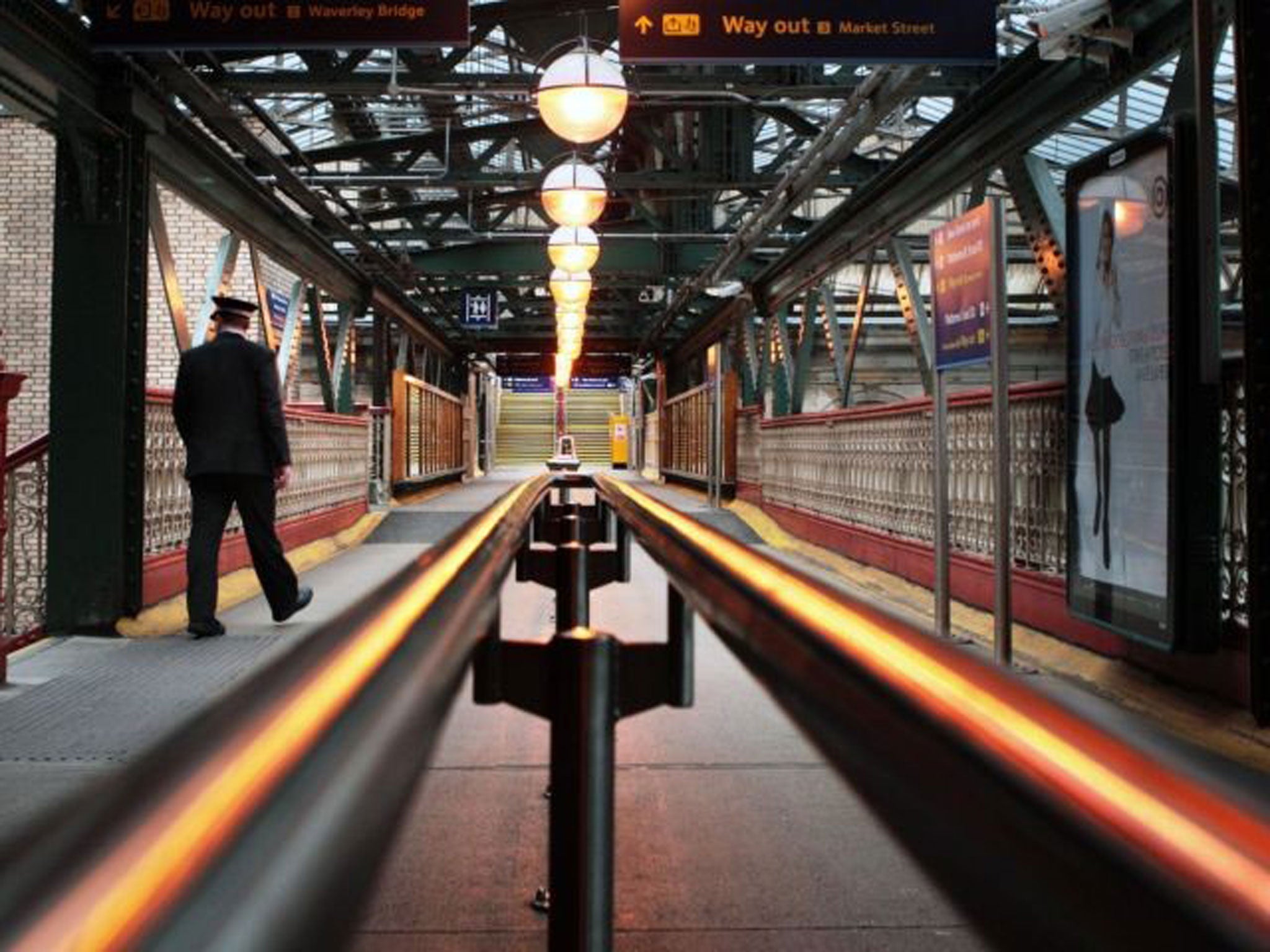Simon Calder: At last! A new way to get to Waverley
The man who pays his way

Two-twenty-two in the afternoon of Monday 9 December: where will you be? If you don't yet have plans for that instant, perhaps you would care to join me for some momentary trainspotting at the main station in the city where Danny Boyle's film, Trainspotting, was set. The new weekday railway timetable comes into force that day, and I want to see if the promised balletic perfection is realised at Edinburgh Waverley.
At 2.22pm precisely, two trains that started hours earlier from different stations in London are due to converge on the Scottish capital – one from the east, the other from the west, mirroring the two main lines they have taken from stations only a few hundred yards apart in London.
For the first time in decades, direct daytime trains from Euston, running on the West Coast Main Line, will serve Waverley – offering, at last, proper competition with the east coast link from King's Cross. The 400 rail miles between the two capitals will be fought over by the two big Anglo-Scottish train operators: Sir Richard Branson's Virgin Trains will take on East Coast Trains.
A pretty penny that's worth paying?
While both services have a top running speed of 125mph, the new schedule looks unequal. When Virgin's passengers set off at 8.43am, their East Coast counterparts can remain happily abed, because their train does not depart until 10am. By that stage, Virgin's slow coaches will be approaching Birmingham – having called at three stations already, with a dozen more to go. After giving the other lot a healthy head start, the East Coast express pauses only at York, Darlington, Newcastle and Berwick-upon-Tweed, averaging a healthy 93mph for the entire run.
Virgin's average of 71mph barely beats the motorway speed limit. That surely implies lower fares, to lure passengers on board?
Not so. The lowest one-way fare on the Virgin train is currently £119, compared with £50 on East Coast Trains. Presumably that is a function of the train being regarded as a peak business service to the West Midlands. Let's hope Virgin sorts out its fares, because there's another reason to take its train: aesthetics. Slow and expensive it may be, but the west coast is emphatically the prettiest route, as I found on a test run.
Going north, the East Coast Main Line doesn't get interesting until County Durham, whereupon it remains lively for the rest of the journey, with fine views from the corrugated north-east shore of England and the curve into the Firth of Forth. In contrast, the west coast has great scenery from the off, carving elegantly through Herts, Bucks and Northants. The railside backyards of Coventry, Birmingham and Wolverhampton may be uninspiring, but once into Staffordshire the countryside becomes more lyrical.
After Crewe (where, until December, you must change) there are some impressive works of man, as witnessed when you scythe obliquely across the Manchester Ship Canal outside Warrington. Considering it is called the “West Coast” Main Line, the railway's encounter with the shore is as brief as it gets – a 200-metre strip just north of Lancaster. A few minutes later the train hurries through Carnforth, the location for the film Brief Encounter. Next, you take a lofty waft past Kendal, sitting comfortably in the hollow carved by the River Kent with England's highest mountains as the backdrop.
The finest scenery is coming up: the folds and fells of eastern Cumbria, where the train outstrips all the traffic on the parallel M6 (apart from an errant white Porsche Cayenne; speeding drivers should note that it is possible to read registration numbers from the train).
The missing link
Once across the border, the Southern Uplands provide the perfect terrain to test the tiltiness of the Pendolino train, and the power of the engines to ascend Beattock Summit at 1,016ft: “Pulling up Beattock, a steady climb: The gradient's against her, but she's on time,” according to W H Auden's epic poem, Night Mail. As a day male, I can confirm my train was punctual too.
The trajectory is firmly set north-west for the heart of Glasgow, the main Scottish destination for Virgin Trains. But at Carstairs Junction it swerves around the closest Britain's rail network has to a hairpin bend. The line carves east-north-east to Edinburgh. Here, you could change for the East Coast Main Line and complete the circuit. Or try the third way …
The most beautiful journey between the two capitals is neither the west nor the east, but the straightest possible path. Going north, take the train from the world's loveliest railway terminus, London St Pancras, via Sheffield to Leeds, where you change for the line across the Pennines to Carlisle. Here, you must currently change for the West Coast Main Line north via Carstairs. But work is under way to reopen some of the line through the heart of the Borders that was erased during the systematic destruction of the railways during the 1960s and 1970s.
Like Edinburgh's main station, the direct line from Carlisle was named in honour of Sir Walter Scott's novel, Waverley.
From 2015, trains should run on the northern third of the line, from Tweedbank to Waverley. The resurrection of the complete line is probably decades away, but meanwhile the two-hour bus ride across the missing link takes you through spectacular scenery that is no less impressive when viewed from the road.
Join our commenting forum
Join thought-provoking conversations, follow other Independent readers and see their replies
Comments